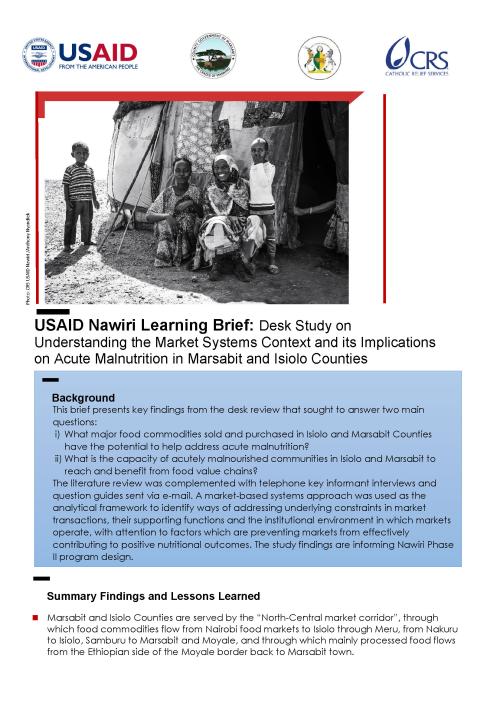This study presents key findings on major food commodities sold and purchased that have the potential to mitigate acute malnutrition, and on the capacity of communities with a high prevalence of acute malnutrition to reach and benefit from food value chains. It identified commodities coming through the North-Central corridor, including cereals, beans, fruit, vegetables, processed food, livestock, and livestock products. Maize, rice, and beans are the main cereals and pulses purchased and consumed. Fish is mainly consumed by fishing and urban communities. The supply of milk and vegetables is highly seasonal; both are less available and more expensive during dry seasons. Additional challenges to preventing and overcoming acute malnutrition include high food commodity prices in more remote locations; climate variability; post-harvest losses; limited producer capacity and poor extension services; poor hygiene/food safety risks; few income-generating opportunities; poor market access; limited market information, food processing, and access to social security networks; lack of credit services; and conflict.
Learning Brief
